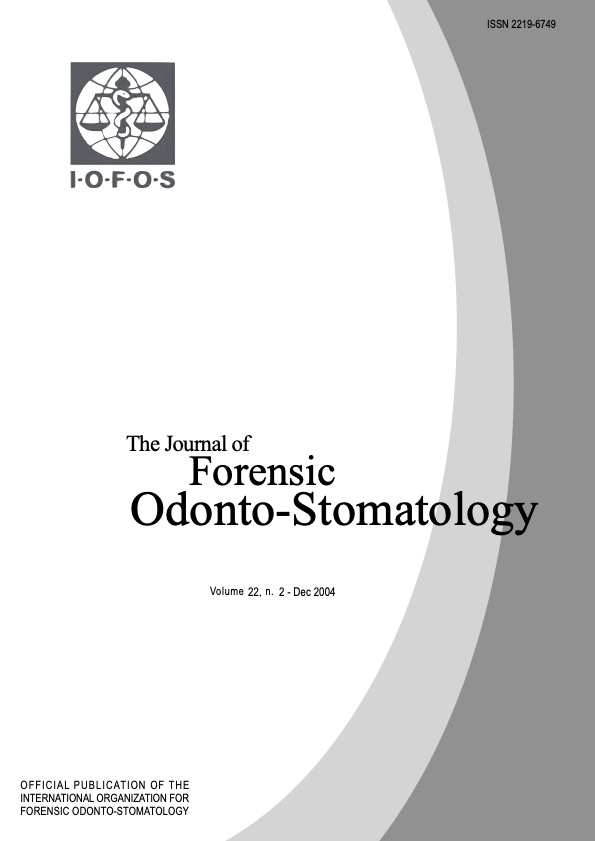Further study of restored and un-restored teeth subjected to high temperatures
Abstract
Forensic dentistry has been shown to be of fundamental importance in medico-legal investigations aimed at identifying human remains involving high temperature incidents because dental remains and prosthetic devices are resistant to quite high thermal change. In this project we studied teeth containing class I and V amalgam and composite fillings and compared them to un-restored teeth when exposed to high temperatures.
Twenty five un-restored teeth, 25 teeth with class I amalgam restorations, 25 teeth with class V amalgam restorations and 25 teeth with class I composite fillings were placed in a furnace and heated at a rate of 30°C/min. The effects at the predetermined temperatures 200, 400, 600, 800, 1000 and 1100°C were examined macroscopically and then observed microscopically by means of a stereomicroscope. Our observations showed that the class I amalgam restorations at the different temperature levels remained in place, maintaining their shape despite disintegration of the crowns, whilst the class I composite restorations remained in place but in an altered shape. Comparing restored with un-restored teeth we observed different responses in crown disintegration at the different temperature levels.

